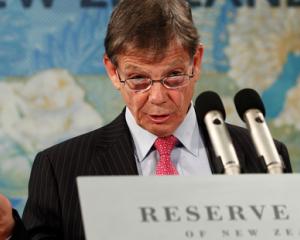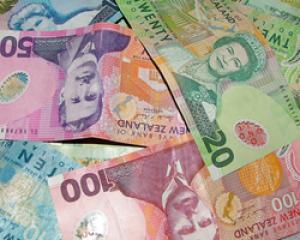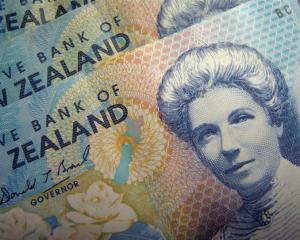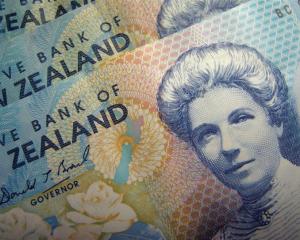The Government will go into election year facing four or five interest rate rises, along with rising inflation.
That will open it up to criticism from the Opposition and community advocates about the cost of living and the lack of wage rises.
The New Zealand dollar is expected to remain high, particularly against the Australian dollar.
The Reserve Bank of Australia last week kept its official lending rate at 2.5%, meaning a differential of 0.25% in the transtasman neighbours' central lending rates is likely soon.
Westpac senior economist Michael Gordon said the Reserve Bank would finally begin the journey back to more normal interest rate settings on Thursday by lifting the official cash rate 0.25% to 2.75%.
The rate rise follows several years of economic underperformance, false starts and major setbacks.
With the Reserve Bank widely signalling in January the adjustment process would start soon, market participants were now widely anticipating an increase on Thursday, he said.
''Indeed, this would have to be a contender for the most well-signalled monetary policy move in this nation's history.''
Interest rate markets had been tipping a March start date for several months, homeowners were reportedly fixing their mortgage rates in greater numbers and the latest ANZ Business Outlook found a net 90% of firms expected interest rates to rise over the next year - the highest reading in the 21-year history of the survey question.
Mr Gordon said the more important message in the Monetary Policy Statement would be on the future of OCR moves once the tightening cycle was under way.
''While the Reserve Bank's project path of interest rate rises could still reasonably be described as `gradual' compared to past tightening cycles, it won't leave much room for dallying. Consecutive hikes at some stage are a given and in our view are more likely to occur up front.''
With that in mind, the Reserve Bank would not want to leave markets and the public in any doubt as to the prospect of follow-up rises at the next few OCR review dates, Mr Gordon said.
Since its economic projections alone were not sufficiently detailed to convey that message, the Reserve Bank would need to be ''fairly clear'' with its words.
Westpac expected four consecutive rises of 0.25% between Thursday and July. Financial markets were not quite fully pricing in follow-up rises so the reaction on the day could be a small lift in short-term interest rates and the New Zealand dollar, he said.
In his forecasts, Mr Gordon expected a gradual return to the 2% mid-point of the inflation target by late 2015, and 2% of interest rate rises over the next two years, which implied between four and five rises in the OCR this year.
GDP growth over the near term was tracking stronger than the Reserve Bank expected. More generally, leading indicators of activity such as business confidence were running rampant, supporting his view growth would accelerate to more than 4% this year.
''The post-earthquake rebuild in Canterbury and rising house prices are now being joined by a sharp lift in export incomes, which is expected to flow through to additional spending and investment.''
Westpac estimated the developments since December were worth an additional 0.2% to 0.3% on the Reserve Bank's interest rate projections over the next two years. That suggested around 1.25% of OCR rises this year, or five 0.25% increments spread over the seven remaining review dates.
''We don't think this would push the Reserve Bank towards a 0.5% move at any stage but it doesn't leave much room for drawing out the process.''
At a glance
• OCR expected to rise to 2.75% on Thursday
• Four or five more rises expected before 2014 general election
• Inflation set to rise to 2%
• Australian Reserve Bank kept its OCR at 2.5% last week






